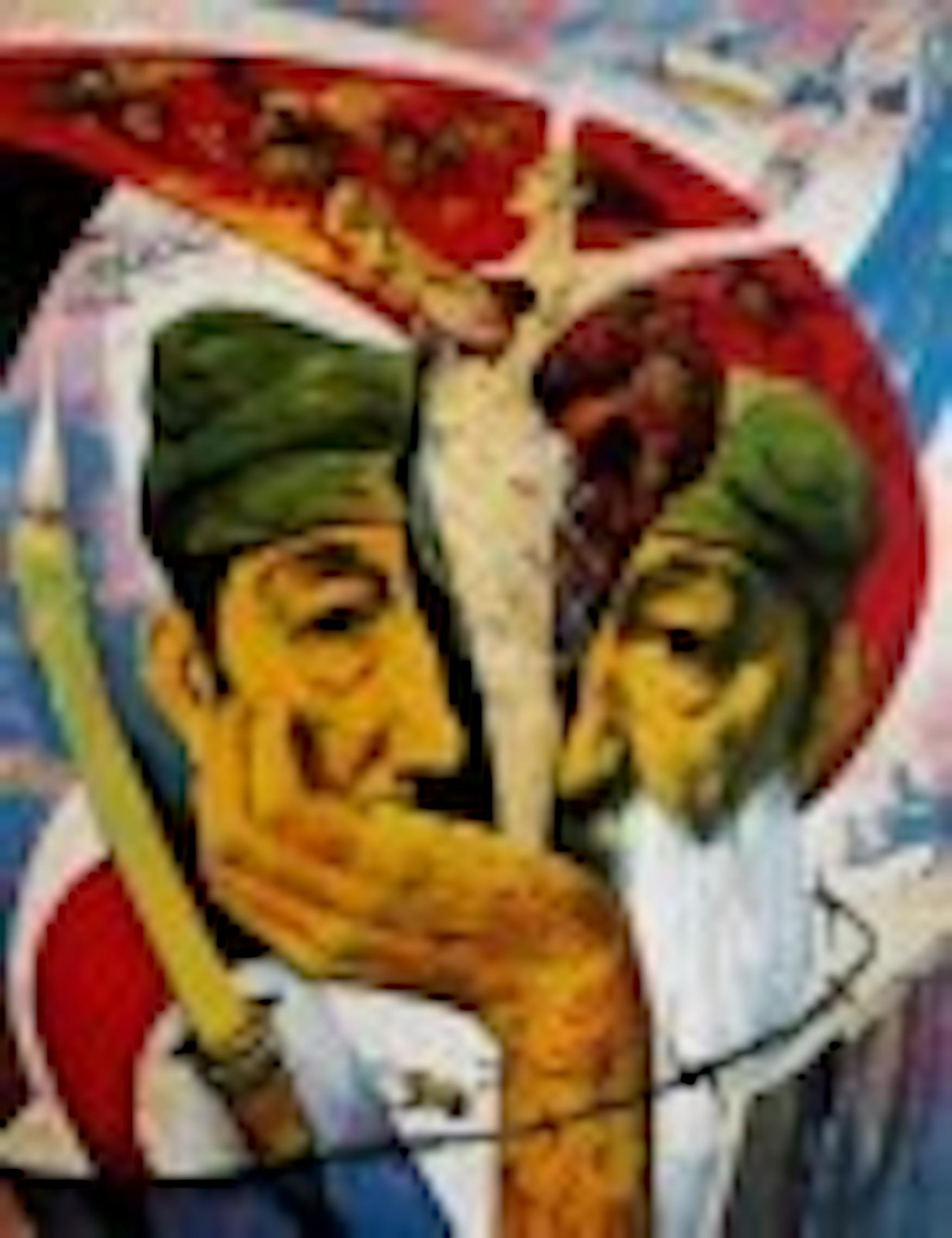Clashing identities connect in Klionsky's art
Julian Olidort '11 coordinated a marvelous interdisciplinary presentation sponsored by the Brandeis Genesis Institute for Russian Jewry Sunday, April 18 titled "Painting the Face of Russian Jewry: The Art and Journey of Marc Klionsky." The event featured his own grandfather, who created the mesmerizing, emotional paintings on display in Rapaporte Treasure Hall for the evening. Klionsky's presence in the room allowed for a wonderful degree of interaction between Olidort's family and the Brandeis professors serving as presenters, giving the audience an insight into the affectionate relationship between Olidort and his grandfather, rooted in the dark history of the Holocaust yet strengthened by divine blessing and unswerving love. With a beaming smile, Olidort, the evening's master of ceremonies, began by introducing his grandfather, Marc Klionsky, who lived in Minsk, Belarus, at the time of World War II. Led by his father, Klionsky journeyed east with 200 fellow Jews and ended up alone in a city the Germans never reached. He found work painting advertisements for movies and designing costumes for the theater and later studied at the National Academy of Fine Art in Leningrad, Russia. This, however, marked only the beginning of his career. The youngest artist ever exhibited at the Tretiakov National Gallery in Moscow, Klionsky painted works that reached exhibits throughout the Soviet Union, Europe, Israel, China, Japan, Australia and New Zealand and became world-renowned for his portraits.
The event featured speakers Profs. Antony Polonsky (NEJS) and Nancy Scott (FA). In an astoundingly rich address, Polonsky discussed the Russian-Jewish immigration experience. When the Nazis invaded in 1941, nearly two million Soviet Jews began to immigrate to America and Palestine, bringing along experience in a socialist mindset. This set Russian Jews apart until the struggle for a Jewish state united Jews around the world. A cultural gap remains, Polonsky said, but Jews should focus on bridging it. "We are all part of Am Yisrael [the nation of Israel]," Polonsky concluded.
Scott gave a fascinating lecture about Klionsky's art, drawing upon the extraordinary impact that the pain and difficulty of immigration tends to have on creative expression. Scott focused on art created in the United States, as much of Klionsky's work from his pre-New York era was lost or left behind in Europe. Among the most outstanding pieces presented was his 1975 surrealist painting Exodus, which displays a man's face split in two with a woman's body rising out, arms outstretched, with angel-like figures soaring out of her chest in a depiction of freedom of the unconscious mind. Scott also displayed Klionsky's portrait of Golda Meir, painted on his first trip to Israel in 1976, and his 1995 portrait of Elie Wiesel, currently owned by Bar Ilan University in Israel.
"What am I? Am I Russian? Am I American? Am I a Jew?" Olidort asked as he reflected on what inspired him to organize the program. "This, to me, was a chance to explore my personal identity through my personal background, and I thought my grandfather's artwork would be an appropriate place to start."
"There's a special atmosphere here," Klionsky told the Justice. "It's nice because there is [a combination of] art and Jewish feeling."
Klionsky's wife, Irina, underscored the special role that Olidort's family history plays in his life and the significance of the event to his family. "He understood very well what's going on in his grandmother's and grandfather's head. . It was very, very important to us that he did this."
"It's also very important for me to bring my grandfather to my generation, to let him see what is today's youth and also the Russian Jewish youth, which had a very strong contingency here tonight," Olidort said. "So I was happy that he had that-and my grandma as well-to see where I am. I see where he's coming from, and he sees where I'm going.



Please note All comments are eligible for publication in The Justice.